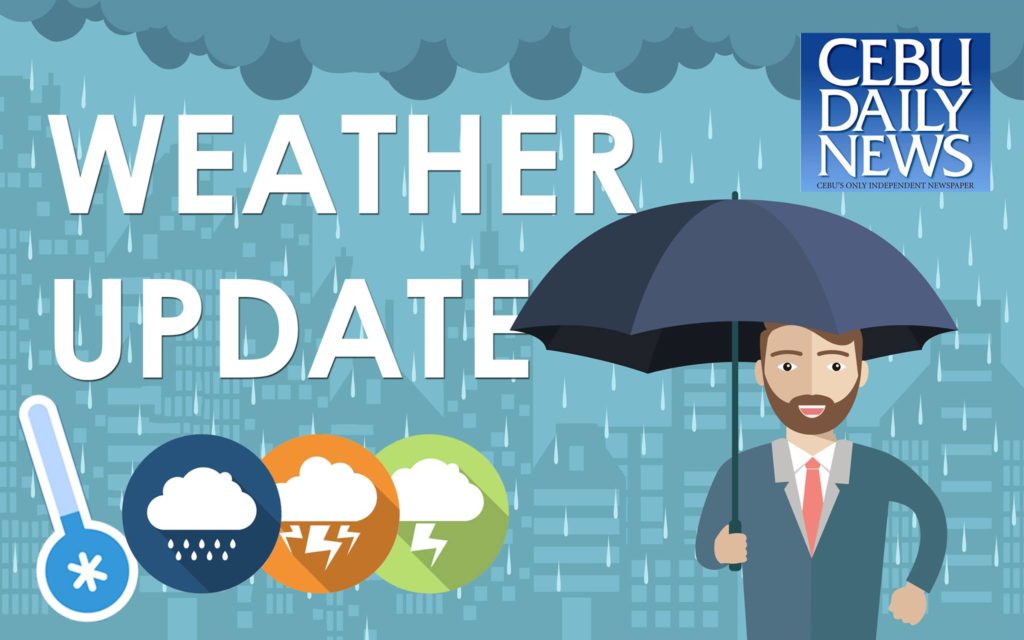A tropical depression is expected to greet 2018.
Alfredo Quiblat of the Philippine Atmospheric, Geophysical and Astronomical Services Administration (Pag-asa) in the Visayas said that the last tropical disturbance for 2017 is expected to enter the Philippine Area of Responsibility as a low pressure area (LPA) anytime tonight (December 30) until the morning of December 31.
“It is expected to develop into a tropical depression on January 1, the first for 2018, and will be named Agaton,” said Quiblat.
However, Quiblat said there is also a possibility that the LPA will become a tropical depression on December 31, hence it shall be called Wilma.
Quiblat said there are three tracks that the LPA will possibly traverse across PAR.
“It may have its first landfall in Northern Mindanao and traverse through Bohol and Cebu, or hit northeastern Mindanao and pass through northern Mindanao before it goes out to Sulu sea,“ Quiblat said.
“Another track that it can possibly take is via Eastern Visayas where it may pass through Bicol Region affecting the rest of southern Luzon,” Quiblat added.
Scattered rain showers and thunderstorms is also expected in Cebu province starting tonight as a result of the northeasterly winds or Amihan strengthened by the LPA, said Pagasa weather specialist Joey Figuracion.
The Cebu Provincial Disaster Risk Reduction and Management Office (PDRRMO) has began preparing for the possible effects of the LPA and has informed all local government units in the province to closely monitor Pagasa’s weather bulletins, said Gov. Hilario Davide III.
PDRRMO head Baltazar Tribunalo added they already formulated contingency plans with the Regional Disaster Risk Reduction and Management Council (RDRRMC) and other stakeholders on Friday.
“We have good coordination with Pagasa so whenever they identify an area with heavy rainfall, we will coordinate with the local disaster management office,” said Tribunalo.
Tribunalo also reminded the residents in landslide-prone areas to be vigilant and immediately follow directives from their local disaster offices to avoid unfavorable incidents.
“Our office will be open 24/7 so we are ready to respond if there will be emergencies,” said Tribunalo.
“We also coordinated with the tourism departments so that tourism activities like whale watching or canyoneering will be regulated if it (LPA) will bring heavy rains to their areas,” Tribunalo added.
